Long-lived Avian Companions: Pet Birds with Longevity
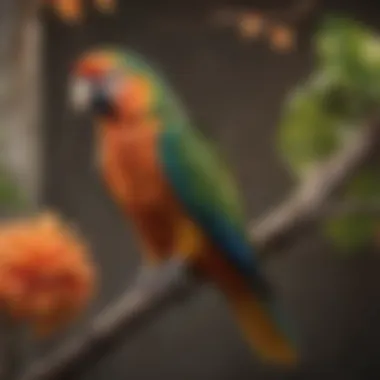
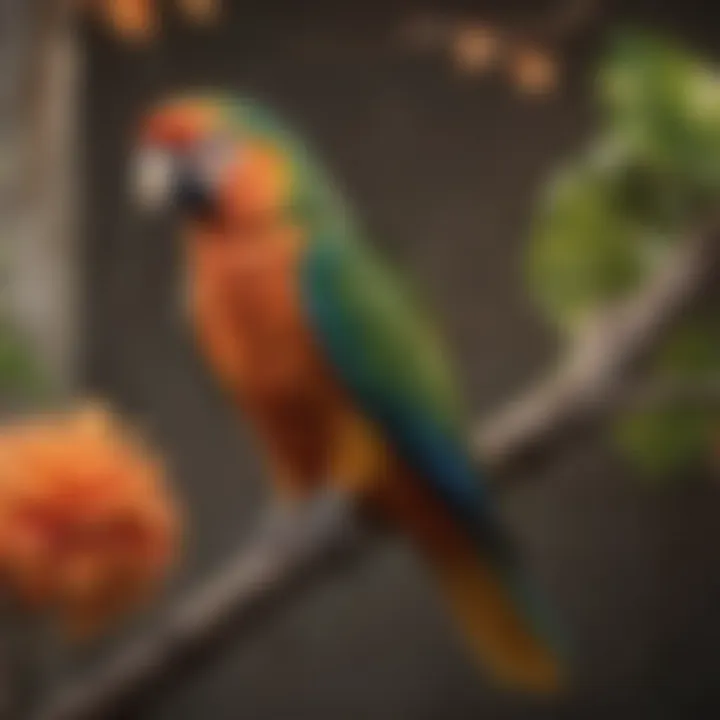
Intro
In the realm of pet birds, longevity is not just a stroke of luck; it often involves conscious choices by the owners that enhance the quality of a bird's life. Understanding the needs and behaviors of long-lived avian companions is critical for any bird owner or aspiring bird parent. This article aims to address the essential sectors affecting these pets' lifespans and wellbeing, covering areas such as care, nutrition, and habitat requirements.
Care Tips
Caring for pet birds extends far beyond providing food and water. Committing to the daily needs of these long-lived animals is foundational to their overall health and longevity.
Daily Care Routines
Establishing a routine that prioritizes physical and mental health is essential. Daily bird care includes:
- Feeding: Providing a balanced diet suited to the species.
- Social Interaction: Engaging in consistent playtime enhances your bird's well-being.
- Observation: Monitoring behavior can reveal underlying health issues early.
Cage Setup and Maintenance
Creating a safe and comfortable habitat is crucial for a bird’s happiness.
- Consider dimensions that allow comfortable movement.
- Using natural materials enhances the environment.
- Regularly inspect for wear and possible hazards.
Hygiene and Cleaning Practices
Consistent cleanliness keeps diseases at bay. To maintain hygiene:
- Clean food and water vessels daily.
- Focus on regular cage cleaning, removing droppings and uneaten food.
- Utilize pet-safe disinfectants when cleaning.
Seasonal Care Adjustments
It is vital to adjust care based on seasonal changes. During colder months, consider adding heat sources and ensuring adequate humidity levels. In warmer seasons, providing enough shade and hydration becomes key.
Behavioral Insights
Understanding bird behavior is integral to fostering a nurturing environment.
Understanding Bird Body Language
Birds communicate through body language, and being observant can save a small life:
- Feathers Fluffed: Indicates stress or discomfort.
- Chattering: Can signify happiness or anxiety, depending on context.
Common Behavioral Issues and Solutions
Behavioral issues may arise from a lack of socialization, boredom, or health issues. Address these by:
- Consulting with avian vets to rule out health concerns.
- Providing various toys and changing them regularly to engage their instincts.
Positive Reinforcement Techniques
Training should be rooted in positive reinforcement. Reward birds with treats when desirable behavior is exhibited to encourage repeat actions.
Social Interaction Needs
Birds are social creatures and may exhibit signs of depression without adequate interaction. Having multiple birds or spending ample time with them can fulfill these social needs.
Nutrition Guides
Proper nutrition is inherently linked to longevity. Understanding what constitutes a healthy and safe diet is fundamental for your avian companions.
Essential Diet Components
A balanced diet for most pet birds often includes:
- Seeds
- Pellets
- Fresh fruits and vegetables
Safe and Toxic Foods
Being aware of food safety is paramount. While many foods are safe, some are toxic to birds. Common toxic items include:
- Avocado
- Chocolate
- Caffeine
Supplements and Treats
Using supplements can be beneficial to enhance nutrition. Certain species may need fortified foods or specific mineral supplements. Treats, administered moderately, provide variety and excitement in the diet.
Feeding Strategies for Different Species
Understand the unique dietary needs of various species, adapting feeding methods. For example, some birds thrive on high moisture diets, while others do well on more seed-based nutrition.
Wellness and Health
Ensuring wellness stems from both physical health and emotional stability. Regular health monitoring is necessary.
Routine Health Checkups
Scheduling checkups is critical, as many illnesses can go unnoticed. A trusted avian vet can provide valuable insights and guidance.
Identifying Symptoms of Illness
Learn to recognize signs of illness such as:
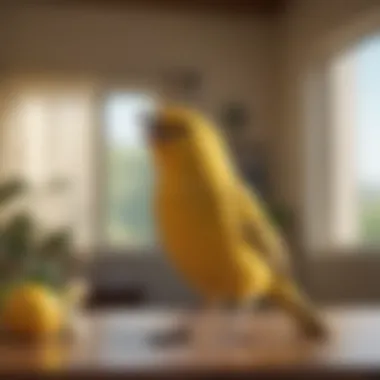
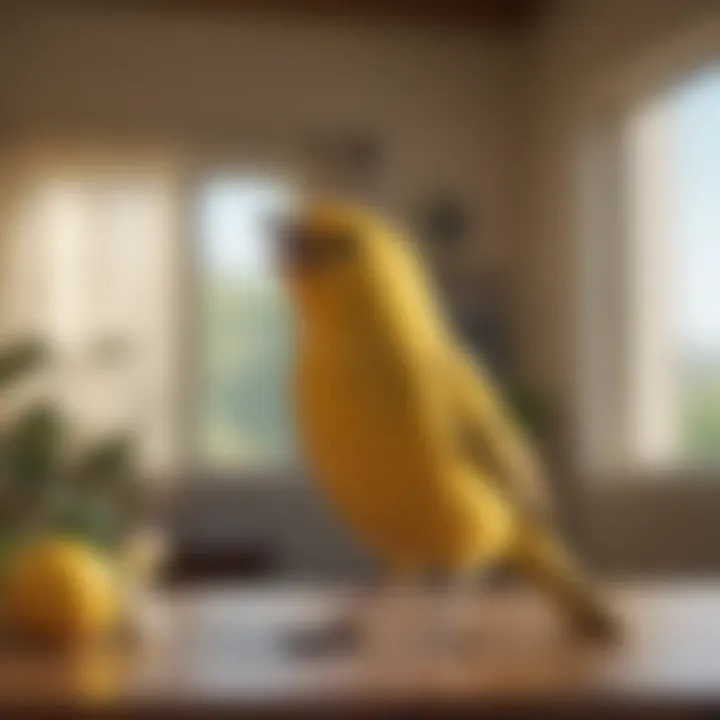
- Reduced activity
- Poor feather condition
- Changes in droppings
Preventative Care and Vaccinations
By keeping up with preventative health measures and vaccinations, owners are taking a proactive approach to ensuring their birds live longer, healthier lives.
Mental and Emotional Well-being
Cognition and emotional health play an often-overlooked role in a bird's happiness. Providing mental stimulation through challenges, toys, and social time reduces stress and enriches their life.
Enriching Activities
Offer a variety of experiences to enhance the quality of life for your pet bird.
Toys and Playtime Ideas
Physical toys keep birds engaged. Rotate toys to maintain interest. Recommended toys include:
- Chewable toys
- Foraging puzzles
- Climbing structures
Training and Tricks
Training can be fun and rewarding for both the bird and owner. Start with simple commands and gradually move to tricks.
Outdoor Activities and Interaction
Interaction outdoors within a safe environment can provide stimulation. Use travel cages sparingly and supervise closely.
DIY Projects for Mental Stimulation
Simplicity can greatly uplift your bird’s day. Create homemade toys or foraging challenges using household items.
Bird wrench their view on the world: Simple activities can lend tremendous warmth and calmness to your bird's environment. This highlights their cognitive function, ultimately boosting your beloved pet's well-being.
Overall, understanding how to care for longevity in pet birds entwines knowledge of habitat, nutrition, and emotional wellness, empowering owners to create environments where their birds can thrive.
Understanding Longevity in Pet Birds
Understanding the longevity of pet birds is crucial for anyone considering these avian companions. Lifespan not only determines how much time you can share with your bird, but it also indicates the level of care and commitment required. Each species is unique, having its specific needs that can affect how long they live. Therefore, exploring the factors influencing lifespan in pet birds offers valuable insights.
Factors Influencing Lifespan
Several factors influence the lifespan of pet birds. One of the primary elements is species-related characteristics. Not all birds have the same genetic makeup, which leads to differences in typical lifespans. For instance, large parrots tend to live much longer than smaller species like canaries. Understanding specifics of each species helps potential owners make more informed decisions.
Additionally, health factors play a significant role. Common ailments like thyroid issues or respiratory infections have impacts that can shorten a bird's life expectancy. Hence, being aware of the potential health concerns related to specific breeds is crucial when selecting a pet bird.
Lastly, environmental elements such as cage design, activity level, and mental stimulation can help ensure birds lead a healthy life. Educating oneself on these aspects can greatly contribute to both the longevity and quality of life of a pet bird.
Role of Genetics in Lifespan
Genetics importantly determines the lifespan of pet birds. Different breeds come with varied genetic predispositions which affect health and resilience to diseases. For example, African Grey parrots usually exhibit longer lifespans compared to smaller breeds like lovebirds. These genetic aspects establish the baseline for how long a bird might live.
Moreover, breeding practices shower light on genetic health and potential lifespans. Ethical breeders prioritize the genetic health of their birds. In contrast, irresponsible breeding often introduces genetic complications that can shorten lifespan. Owners choosing to adopt birds from responsible sources are investing in better long-term health necessities for their pets.
Impact of Diet on Lifespan
Nutrition profoundly impacts pet birds’ longevity and general health. A well-balanced diet can substantially reduce health problems, allowing birds to thrive and live longer. High-quality pellets, fresh vegetables, and a limited amount of fruits and seeds should be part of their daily diet.
In contrast, the popularity of seed-only diets can lead to nutritional deficiencies. Such deficiencies can increase the risk of conditions that plague many species. Furthermore, regular vet consultations can help in adjusting diets based on specific needs and health changes, amplifying benefits for longevity.
Healthy diet contributes significantly in ensuring bird's better quality of life.
Environmental Enrichment and Its Effects
The importance of environmental enrichment cannot be underestimated when climate comes to pet birds. Birds, being intelligent creatures, require mental and emotional stimulation to keep them engaged and minimize stress. Enrichment activities include toys, perches, even safe outdoor time, promoting happiness and longevity.
When birds are not challenged or entertained, they may exhibit signs of boredom leading to destructive behaviors or health issues such as obesity. As a result, providing effective environmental enrichment reflects positively on a bird’s lifespan along with its quality of life. Simple alterations in their daily routine can create a meaningful difference, rendering both fun and functional improvements in their longevity.
In summary, understanding the longevity of pet birds encompasses important elements from genetic aspects to environmental impacts. By paying attention to these factors, potential avian owners can optimize the care and upkeep of their feathered friends.
Popular Long-Lived Pet Bird Species
Understanding which pet birds stand out for their longevity helps prospective and current bird owners make informed decisions. Longevity within the realm of avian companions brings various benefits. A longer lifespan often means a deeper bond with the pet, along with a commitment that can evolve into a long-term hobby. Each breed comes with unique consideration when it comes to their hearty years. Winged mischief-makers like African Grey Parrots, Cockatoos, and Macaws offer a delightful companionship, but their needs can be exceptional.
African Grey Parrots
African Grey Parrots are frequently recognized for their immense intelligence and impressive lifespans. They can live over 50 years in captivity under optimal care. Their remarkable cognitive abilities grant them the capability to learn words and even engage in conversations, making them particularly appealing for bird enthusiasts. Adopting an African Grey also means being aware of their social needs. These birds crave interaction, and mental stimulation is vital for their well-being. Inadequate enrichment can lead to feather picking, signifying distress.
Cockatoos
Cockatoos, especially species like the Umbrella and Moluccan, often surprise owners with their loving disposition and impressive longeity, averaging around 40 to 60 years. They have captivating personalities and form strong bonds with their owners. However, Cockatoos require extensive time and attention. Their playful nature comes with a demand for engagement in daily activities. Failing to meet their emotional needs can lead to problematic behaviors such as screaming or destructive tendencies.
Amazon Parrots
Amazon Parrots, distinguished by their vibrant feathers and inquisitive nature, can live beyond 50 years in an appropriate setting. Their adeptness in speaking can make for an entertaining household, yet it can also pose a challenge if they develop negative speaking behaviors or habits. Regular social interaction and diverse experiences can mitigate such issues. Their habitats should reflect their lively spirit, offering ample opportunities for physical and mental activity.
Budgerigars
Commonly known as Budgies, these small birds are not to be underestimated when it comes to lifespan. With proper care, they can live up to 15 years or more. They are low-maintenance within the realm of larger species, but owners should ensure that their social needs are met. Budgerigars often thrive best in pairs or groups. Not only can they infuse excitement into a home, but they bild strong bonds--though they can also learn words and mimic sounds in a joyful and playful manner.

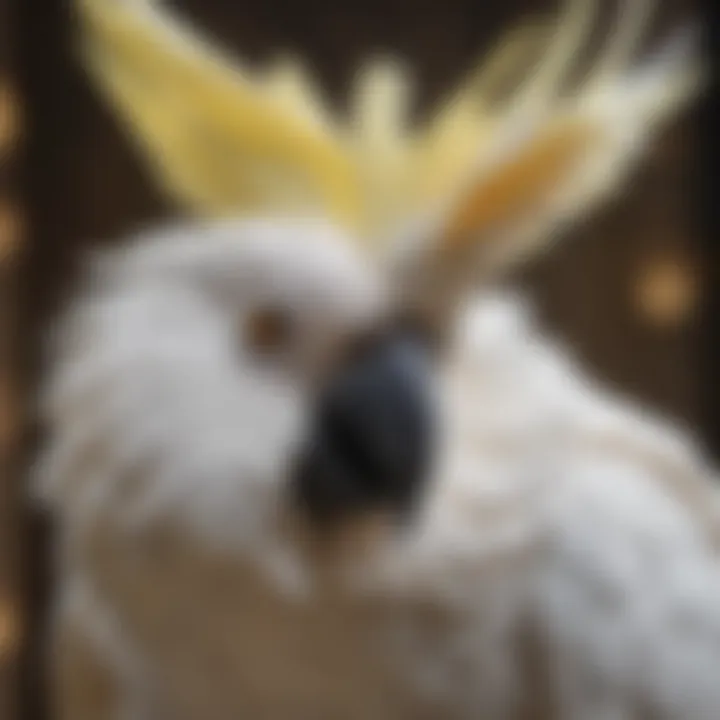
Macaws
Macaws, such as the Blue-and-yellow Macaw, present awe-inspiring beauty along with a potentially enduring life, often exceeding 50 years. Their social nature makes them excellent companions but demands a significant amount of attention and interaction. Macaws also necessitate a large housing space and frequent mental stimulation through interactive toys and socialization. Failure to meet these demands can lead to health problems and undesirable behaviors.
Care considerations across all of these species indicate that invested bird ownership can yield an incredibly rewarding relationship.
In summary, the choice of pet birds known for advancements in longevity can potentially enrich the owner's life significantly as the years roll on.
Record Holders: The Birds with the Longest Lifespans
Understanding the remarkable lifespans of certain pet birds provides valuable knowledge for bird enthusiasts. This section highlights specific examples and the lessons these record holders offer to pet owners. Knowing about these long-lived birds not only creates fascination but also reflects the extensive care and conditions necessary for such longevity. Owners can draw inspiration from these cases, using them as standards for optimal care of their own birds.
The Case of Methuselah: The Oldest Recorded Parrot
One of the most notable examples of longevity is a parrot named Methuselah. This remarkable bird lived for an astounding 82 years. Methuselah was a Blue-and-yellow Macaw. Her life serves as a significant case study for understanding parrot longevity. Parrots poputarly can reach ages of 60 or more years, and Methuselah's example is an extraordinary outlier.
The longevity of Methuselah conveys the importance of proper care. Factors like a balanced diet, a spacious living environment, and regular mental stimulation were crucial in her prolonged life. Such care principles can enhance the quality of life for any bird. Methuselah’s lifetime is also a reflection of genetic factors that contribute towards her delayed aging. Parrots, especially those with good genetic backgrounds, tend to live longer.
Moreover, this instance demonstrates that owner commitment and awareness significantly influence a pet's lifespan. Ensuring intelligence and proper housing extended Methuselah’s life, but she was able to remain social throughout her years, further emphasizing community as sustenance.
Analysis of Lifespan Data in Captive Birds
Analyzing lifespan data for captive birds such as parrots, cockatoos, and others reveals patterns that reinforce the significance of exemplary care practices. Studies indicate that captive birds often show impressive lifespans when properly cared for versus those raised in less-than-ideal conditions. Notably, in the right environment, some species regularly surpass their average lifespan by a wide margin.
Caring for long-lived birds necessitates understanding common health concerns that impact longevity. Identifying chronic conditions early through veterinary check-ups becomes essential for managing the wellbeing of such birds. Bird owners should also note species-specific health traits, reflecting where advantages exist among distinct populations.
- Some factors to consider include:
- Genetic diversity: Better genetics often affirm a basal lifespan.
- Feeding habits: A truly balanced diet, often boasting fresh fruits, vegetables, seeds, and balanced pellets reaps longevity.
- Living conditions: Safe, enriching, and spacious environments are critical fundamentals.
Gathering into databases or communities might further enhance owner curiosity leading to practical experiences sharing best practices. In so doing, bird breeders and pet lovers together contribute towards a collective knowledgeable landscape.
Exploration into avian longevity unfailingly corresponds with understanding the relationship between care practices and outcomes in lifespan. Pet owners readily adjusting based on information could lead to healthier birds and amaze pet owners for years to come.
Care Considerations for Longevity
Understanding care considerations for long-lived pet birds is essential for avian enthusiasts. Each specific aspect of care has significance in promoting the overall health and longevity of these companions. Pet birds can easily become sensitive. The environment they inhabit and the details of their care plan must be prime priority of owners.
Essential Nutrition for Long-lived Birds
Proper nutrition is a foundational element in enhancing the lifespan of pet birds. A balanced diet provides the necessary vitamins and nutrients, which helps to bolster various bodily functions. Parrots, for instance, are omnivorous and require a balanced mix of seeds, fruits, vegetables, and nutritious pellets tailored to their species.
Key nutrients include:
- Proteins: Found in nuts, seeds, and legumes. These play a significant role in growth and repair of tissues.
- Vitamins: In particular, Vitamins A, D, and E, important for immune function and feather health.
- Minerals: Calcium and phosphorus support bone health.
- Omega fatty acids: Derived from flaxseed or chia seeds, these aid heart health.
Industry options can vary considerably. Always consult with an avian vet for ideal dietary recommendations specific to each bird species in your care.
Regular Health Check-ups and Their Importance
Veterinarian visits for pet birds facilitate early diagnosis of health issues before they compound into critical conditions. Routine health examinations aid in monitoring preventive care for various potential diseases, including feather-plucking and obesity. Regular assessments should include thorough checks by a vet who specializes in avian species. Moreover, vaccinations, parasite control, and blood tests would also be part of these essential evaluations.
The importance of these check-ups cannot be overstated. Detecting abnormalities at the early stages can greatly improve the longevity of your birds, helping you understand their evolving health needs.
Social Needs and Longevity
Birds are intrinsically social beings. Their well-being is closely intertwined with their mental and emotional health. Isolation can lead to stress and behavioral issues. Thus, meeting their social needs significantly affects their longevity.
A few simple ways to enhance social engagement include:
- Companionship: Consider having more than one bird, or give them ample interaction with human owners.
- Daily interaction: Spending just a short duration daily can boost comfort and trust.
- Playtime: Providing opportunities for active play encourages mental stimulation, challenging their intelligence and keeping them physically robust.
A healthy social environment will promote not only happiness but longevity within your avian companions.
The Role of Environment in Bird Longevity
The environment in which a bird lives plays a crucial role in its health and overall lifespan. Understanding this relationship helps pet owners enhance the wellbeing of their avian companions. Key factors such as habitat safety, natural light exposure, and spatial awareness are significant elements impacting longevity. Each factor is interlinked, contributing to the bird's mental and physical health. Healthy environments cultivate positive behaviors and reduce stress in pet birds.
Creating a Safe Habitat
Creating a safe habitat is essential for fostering longevity in pet birds. Safety should be the priority, as it protects birds from potential harm. An ideal space effectively reduces risks from external threats, sharp objects, and toxic materials.
Here are some considerations for establishing a safe environment:
- Choose Safe Materials: Avoid cages made with hazardous metals. Instead, select stainless steel or powder-coated materials.
- Remove Hazardous Substances: Ensure that hazardous items, like cleaning chemicals and poisonous plants, are out of reach.
- Secure Area Around the Cage: Implement bird-proofing strategies to lessen the risk of accidents.
- Provide a Quiet Space: A calm area minimizes stress. Birds are particularly sensitive to loud noises and excessive activity.
Adhering to these steps promotes a secure surroundings that contribute positively to a bird's health.
Exposure to Natural Light and Its Benefits
Exposure to natural light brings numerous benefits to pet birds. Sunlight affects not only a bird's mood but also its physical health. Lack of adequate light may lead to anxiety and health issues.
Benefits include:
- Vitamin D Synthesis: Birds require exposure to UV light to synthesize Vitamin D. This vitamin is vital for calcium metabolism, promoting strong bones and overall health.
- Mood Regulation: Natural light can enhance bird's mood and provide stimulation. This helps combat stress and promotes curious behaviors.
- Natural Circadian Rhythm: Exposure to daylight establishes a healthy sleep pattern, important for overall wellbeing.
For birds, combining sunlight exposure with time outside of their cages improves their quality of life.
Importance of Space in Bird Cages
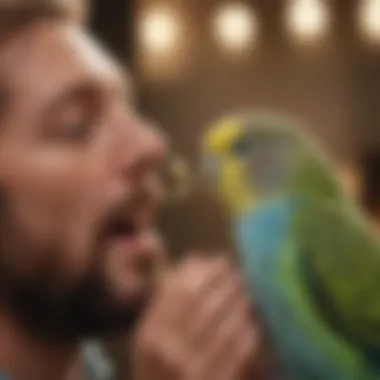
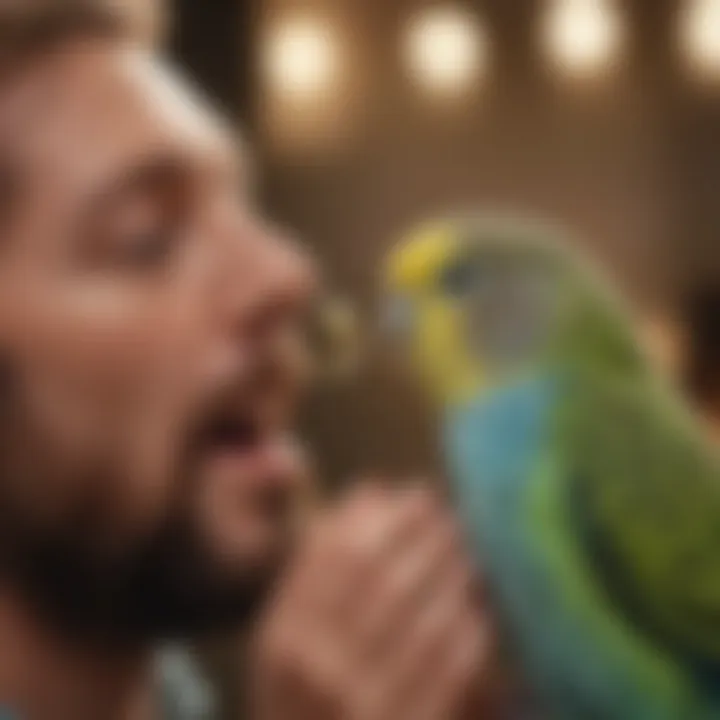
The size of a bird's cage substantially impacts its physical and emotional health. Birds need room to stretch, flapper their wings, and engage in active behaviors. Squished conditions lead to boredom, anxiety, and potentially aggressive behaviors.
Key points about the importance of space:
- Room for Movement: It is crucial to choose a cage that allows for free movement. Birds thrive when they can change positions, fly short distances, or play.
- Opportunity for Exploration: Larger cages provide the chance to develop curiosity, explore different toys, and engage in healthy exercise.
- Reduced Aggression: Overcrowding can create territorial behaviors among birds. Adequate space leads to a calmer environment, essential for activity and interaction.
In summary, selecting a cage aligning with your bird's size and breed ensures that its living conditions foster enthusiastic, stability, and healthy behaviors, all of which contribute to a longer life.
Creating an optimal environment is integral to bird ownership, resulting in healthier pets and extended life spans.
Enrichment Activities for Pet Birds
Enrichment activities play a vital role in enhancing the lives of pet birds. These activities can influence mood, behavior, and ultimately, lifespan. Just as humans benefit from mental and physical stimulation, pet birds do too. Fulfilling their inherent behavioral needs aligns with their well-being. Satisfying their curiosity and instincts through appropriate activities is essential.
Interactions and challenges improve birds' cognitive abilities. Providing various enrichment options keeps them active and engaged. The right stimulation can lower stress levels, prevent boredom, and reduce undesirable behaviors. Pet birds that receive ample mental and physical engagement are often healthier, leading to longer lives. Here are some important elements and benefits of enrichment activities:
- Mental Stimulation: Engaging activities prevent a bored or anxious pet. Introducing puzzle toys or foraging materials forces birds to think critically.
- Physical Exercise: Climbing, flying, and exploring reinvirgorate their physical being. Play gyms and flight space encourage movement, minimizing weight-related issues.
- Socialization: Interaction with their owners or other pets promotes strong social bonds. Regular communication helps them feel secure and enriches their environment significantly.
In regards to offering these activities, careful consideration is necessary. Each bird has unique preferences and requirements based on species, size, and age. Regularly evaluating which activities resonate most with your pet can ensure they remain engaged.
Interactive Toys and Their Benefits
Interactive toys are crucial tools to enhance enrichment for pet birds. These toys offer unique benefits that cater to the natural instincts of avian companions. Toys that promote engagement go beyond simple play; they offer cognitive challenges and gratifying stimulation.
Adding interactive toys to the birdcage or play area can significantly help:
- Cognition Enhancement: Toys that require problem-solving skills stimulate their minds. Such cognitive challenges can delay the onset of mental decline as birds age.
- Curiosity Satisfaction: Toys that make noise or offer novel surprises engage natural curiosity. This not only spurs them to explore but creates excitement around playtime.
- Behavioral Focus: Toys built to be chewed or destroyed help manage the natural instinct to gnaw on objects. This reduces potential harm caused by inappropriate objects they could reach.
By rotating the toys regularly, boredom can be most effectively avoided. Also, ensure that all toys are safe with no small parts that could present hazards.
Training and Socialization Techniques
Training and socialization techniques are another critical aspect of enriching the life of pet birds. Social bonding through training not only cultivates behavior but positively influences overall well-being. Adapting to their living environment is essential for birds, especially in a domestic setting.
Engaging birds in training projects a shared responsibility and can yield remarkable benefits:
- Trust Development: Establishing clear communication channels between owners and birds aids in trust formation. Regular positive encounters promote comfort during handling.
- Behavior Reinforcement: Introducing commands or tricks through consistent training fosters positive behavior. Chemicals and reinforcement tools improve compliance and enthusiasm in learning.
- Strengthening Bonds: As owners dedicate time to training, relationships with their birds deepen. Creating enjoyable moments through mutual tasks further solidifies companionship.
Similar to interactive toys, consistency here is critical. Identifying their learning style and preferred motivators can make training more effective. Tailoring the approach to suit individual needs is recommended.
Signs of Aging in Pet Birds
Understanding the signs of aging in pet birds is essential for ensuring their wellbeing and maintaining their quality of life. Just like humans, birds go through various physical and behavioral changes as they age. Recognizing these signs can help owners provide better care and make necessary adjustments to their environment and diet. Close observation enables owners to address any health concerns promptly. It’s imperative to be aware of aging signs so that owners can set appropriate expectations for their birds and offer the requisite support for their needs.
Common Physical Changes
Physical changes are often the most visible signs of aging in pet birds. Various species exhibit different traits, yet certain patterns emerge across many types of birds. Here are some common physical signs to look for:
- Feather Changes: Aging birds may begin losing feathers or developing a bad feather condition. Feathers can become dull, thin, or even fall out entirely, which may indicate health issues or deficiencies.
- Changes in Body Weight: A bird losing significant weight or gaining too much may highlight new diet requirements or underlying medical issues.
- Altered Beak and Nail Growth: Over time, a bird's beak and nails can grow either too long or too brittle. Frequent beak trims or nail maintenance will become critical as the bird ages.
- Eyesight Deterioration: It is not uncommon for older birds to struggle with their vision. Look for signs such as slow response to movements or difficulty navigating their environment.
It can be helpful to observe these physical transformations closely over time. Regular veterinary check-ups are also significant for spotting and monitoring changes effectively.
Behavioral Changes in Aging Birds
Behavioral changes can reveal a lot about a bird’s aging process. A keen awareness of these shifts allows owners to cater their care more precisely. Here are the typical behavioral signs you may encounter:
- Decreased Activity: Older birds might exhibit less enthusiasm for playing and moving around. Less interactive play might signify fatigue or physical discomfort.
- Vocalization Changes: A noticeable change in a bird’s vocal patterns may indicate aging. Some birds become less vocal, while others may increase their singing out of confusion or confusion. Both of these shifts are normal, yet noteworthy.
- Altered Social Behaviors: Birds may experience a decrease in interest in interaction, causing them to become isolated or prefer solitude. If a previously social bird stops engaging, it can often correlate with how they’re feeling physically.
- Increased Scratching or Preening: A rise in scratching can sometimes occur as birds with arthritis look for ways to ease discomfort. Such actions can indicate various issues, hence they require monitoring.
The Importance of End-of-Life Care
End-of-life care is a vital aspect of keeping pet birds. Birds have a unique way of experiencing the aging process and their final days can differ widely from other pets. Recognizing the value of this care emphasizes a compassionate approach to animal ownership. Many pet bird owers might overlook this part, focusing instead on their bird's healthy years. However, ensuring that moment before a bird passes is meaningful, pain-free, and peaceful is crucial.
Understanding the complexity of palliative care becomes essential in this context. It involves making informed decisions about life-sustaining options, pain management, and emotional support for both the bird and the owner. High-quality end-of-life care can significantly impact the quality of time remaining for the bird.
Moreover, an emotional connection is formed over years. Thus, the owners need appropriate guidance. This aids create an environment where love continues, even when the unavoidable entities dive into focus.
End-of-life care helps provide dignity, comfort, and quite often, love until the end for our avian companions.
Understanding Palliative Care for Birds
Palliative care for birds centers on relieving suffering. It aims at enhancing the quality of life when healing is no longer an option. This care might inlcude pain management through medications like meloxicam, a non-steroidal anti-inflammatory used cautiously. This approach helps soothe pain and distress, allowing birds to live comfortably.
Supplementary tools, such as soft bedding, gentle handling, and relaxed surroundings, offer additional relief. When birds require assistance eating, specialized diets can often improve their day-to-day experience. Nutrient-rich soft foods ensure energy levels remain stable, even if only slightly.
Another crucial aspect lies in supportive presence. Humans can create moments of comfort. Soft talking, gentle touch, or a favorite quiet place can develop positive experiences in their last days. Communicating with avian veterinarians is also important to evaluate options at this phase of life.
Emotional Preparations for Owners
Owners often undergo a range of emotions when facing their pet bird's decline. This reality brings sadness, fear, and potentially, guilt. Recognizing these feelings is valuable. Accepting that nature encompasses the cycle of life helps many owners cope with impending loss.
Practicing mindfulness or connecting with support networks can be beneficial in managing these emotions. Organizations dedicated to pet owner support can offer insights and share experiences. Books relating to loss or grief might provide clarity, allowing individuals to prepare better emotionally.
Another consideration is to create lasting memories to look back on fondly. This might involve photos or small keepsakes. Engaging in conversation with fellow bird enthusiasts, either on platforms like Reddit or Facebook groups, can also provide a community feel. These shared experiences tend to help on what feels overwhelmingly solitary.
Finale: Prioritizing Longevity through Care
Ensuring the longevity of pet birds requires a multifaceted approach. Owners must understand that enhancing the lifespan of their avian companions involves more than just feeding them adequately. These birds depend on a combination of proper care, regular monitoring, and attentiveness to their needs in both physical and emotional realms.
Final Thoughts on Choosing Long-Lived Birds
When deciding on a pet bird, longevity should be among the guiding factors. Species such as African Grey Parrots and Macaws can live for decades, and their long lives come with complications. These birds require not only optimized diets but also diverse social interactions and active stimulation. Choosing a species known for its longevity can set the stage for a rewarding and enduring relationship between the bird and its owner. It is essential that prospective owners, like any pet-loving would-be caregivers, conduct enough research to select a bird that not only fits their lifestyle but has the potential for a long and healthy life.
Recommendations for New Owners
For anyone new to bird-keeping, the primary step should be forming a solid groundwork for care. Here are some recommendations:
- Educate before committing: Learn about different species’ specific life spans and requirements.
- Secure a veterinary relationship early: Find a vet specializing in avian care to monitor health throughout the bird's life.
- Invest in quality diet: Nutritional needs vary greatly across species. Always research rather than assume.
- Enrich the environment: Include various toys that challenge mental skills, along with opportunities for exercise.
- Nurture social connections: Regular interactions with humans and other birds can significantly influence a pet bird's happiness and longevity.















